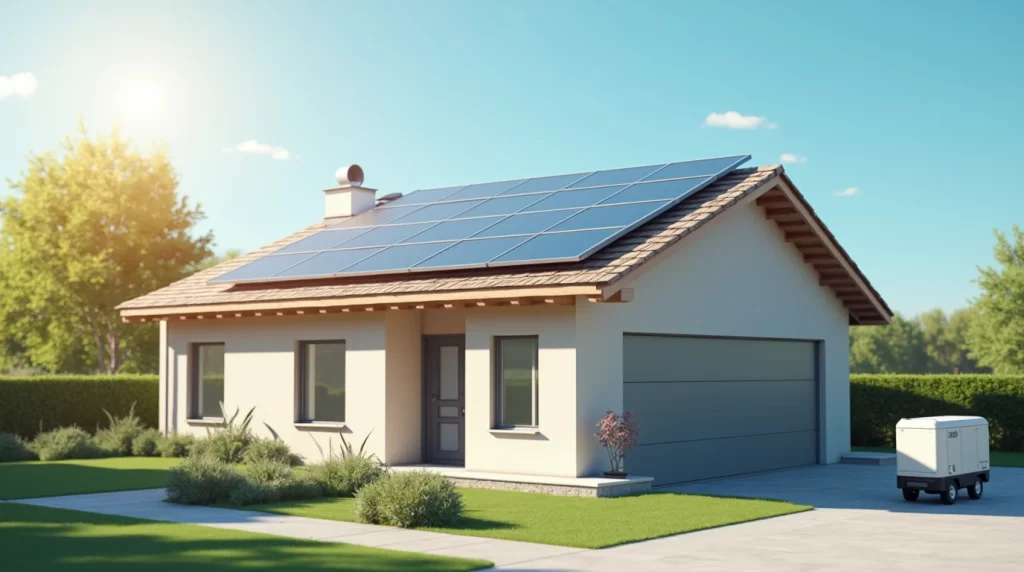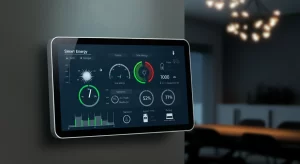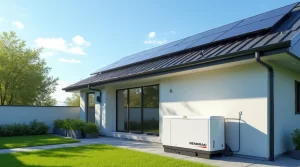Renewable energy systems are rapidly changing the way homeowners think about power. While solar panels are excellent for harnessing clean energy, they aren’t always enough on their own—especially during extended power outages or times of reduced sunlight. That’s where home generators come in, providing a reliable backup when your solar system can’t meet demand.
In this guide, we’ll explore the essentials of solar power integration with home generators, covering the benefits, technical considerations, and code compliance tips you need to ensure seamless energy availability throughout the year.
1. Why Combine Solar Panels and Generators?
Benefits of Pairing Systems:
• Reliable Backup: While solar panels generate electricity during sunny hours, a generator covers you during extended cloudy periods or at night.
• Lower Fuel Consumption: A generator only runs when solar or battery storage isn’t sufficient, reducing diesel or propane usage.
• Long-Term Cost Savings: Depending on your battery storage capacity, you can use minimal generator runtime, saving on fuel and maintenance.
Related Resource: If you’re unsure how large a generator you might need, check out our article, What Size Generator Is Needed to Power a House? for insights on load calculations and panel considerations.
2. How Solar-Generator Systems Work
In a solar + generator setup, energy typically flows in this sequence:
1. Solar Panels: Generate DC electricity from sunlight, which is then converted to AC power by an inverter.
2. Home Load / Battery Charging: Your home appliances consume solar energy first; surplus power can charge an on-site battery bank.
3. Utility/Grid Connection (If Applicable): Excess solar power can feed into the grid, or you can draw from the grid when solar/batteries are low.
4. Generator Backup: If solar and batteries can’t handle the demand, the generator automatically starts, covering the shortfall and possibly charging batteries simultaneously.
Inverter-Generator Compatibility:
• Grid-Tie Inverters: Common in solar installations but need specialized auto-transfer switches if a generator is involved.
• Hybrid Inverters: Designed for off-grid or grid-tied use, seamlessly managing both solar input and generator backup.
3. Key Considerations Before You Start
a) Current Electrical Panel Capacity
• Ensure your panel can handle the combined load of solar backfeed and generator input.
• If you have an older or undersized panel, consider an upgrade.
b) Battery Storage or No Battery Storage?
• With Battery: Offers deeper autonomy, letting you minimize generator runtime.
• Without Battery: Your generator may start more frequently, even for modest demand.
c) Fuel Type
• Propane vs. Gasoline vs. Natural Gas: Each has cost, availability, and storage pros/cons.
• Large loads (e.g., well pumps, HVAC) might benefit from a higher-capacity propane or natural gas generator.
d) Local Climate
• Sunny regions see faster solar ROI.
• Cloudy or snowy regions often need more battery capacity or generator support.
Tip: For winter-specific considerations (like dealing with ice and snow), see our guide on Heat Tape Winter Protection—keeping your roof and gutters clear is crucial for consistent solar output in colder climates.
4. Installation and Code Compliance
a. Professional Assessment
• Licensed electricians can perform a load analysis and ensure correct wiring.
• Combining solar backfeed and generator input requires advanced load management.
b. Permit and Inspection
• Most areas require permits for solar, generator installs, and any associated wiring changes.
• National Electrical Code (NEC) and local amendments regulate how these systems interconnect.
c. Automatic Transfer Switch (ATS)
• Allows safe switching between solar/battery power, grid power, and generator backup.
• Prevents backfeeding power into the grid (which can endanger utility workers).
Check out: Electrical Code Updates and Safety Standards: What Homeowners Need to Know to ensure your solar-generator setup meets current regulations.
5. Maintenance and System Optimization
a. Generator Maintenance
• Regularly change oil, replace filters, and test-run your generator.
• For a thorough look, see our Generator Maintenance for Winter guide—these practices apply year-round, not just in cold months.
b. Solar Panel Cleaning
• Dirt, leaves, or snow buildup reduce efficiency.
• Schedule semi-annual cleanings or install automated cleaning systems if debris is frequent.
c. Battery Health Checks
• Periodically test battery voltage, especially if you rely on it heavily.
• Some advanced systems offer remote monitoring and diagnostics.
6. Cost, Incentives, and ROI
Upfront Investment:
• Solar system cost: Varies by wattage, panel quality, and battery capacity.
• Generator: A typical home standby generator (18kW- 26kW) can range from $6,000-$8,000 plus installation.
Incentives and Rebates:
• Federal Tax Credits: The U.S. offers investment tax credits (ITC) for solar, and some states have additional rebates.
• Utility Programs: Net metering or feed-in tariffs can offset costs when your solar produces surplus energy.
Long-Term Savings:
• Reduced electricity bills; minimal generator fuel consumption if solar covers most loads.
• Potential property value increase due to renewable energy and backup power features.
7. FAQs About Solar & Generator Integration
a. Can any generator work with a solar system?
• Not all. Look for generator models specifically designed or recommended for hybrid setups. They need compatible transfer switches and inverters.
b. Do I need a battery bank if I have a generator?
• It’s optional. A battery bank reduces generator runtime and allows you to store extra solar power. Without batteries, the generator runs whenever solar output can’t meet demand.
c. Will I still need the grid if I have both solar and a generator?
• Not necessarily, but most homeowners remain grid-tied for convenience and backup. Full off-grid setups are possible but require ample battery and generator capacity.
8. Conclusion and Next Steps
Solar power integration with home generators offers a powerful combination of sustainability and security. While solar panels handle day-to-day energy needs (especially in sunny climates), a well-chosen generator ensures you’re never left in the dark—literally—during storms, extended overcast periods, or peak usage times.
Ready to Get Started?
If you’re considering a solar + generator setup or want to upgrade your current system, Kendrick Electric can guide you through every step—from load calculations and panel upgrades to transfer switch installations and code compliance.
Call us at (435) 752-1888 or Contact Us to schedule a consultation. We’ll design a custom solution that keeps your home powered, efficient, and prepared for the future of energy.



